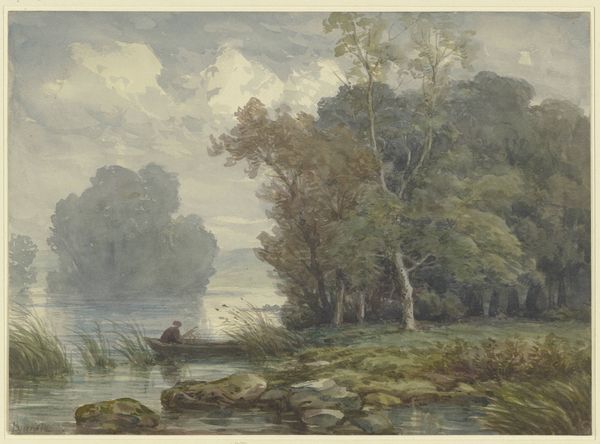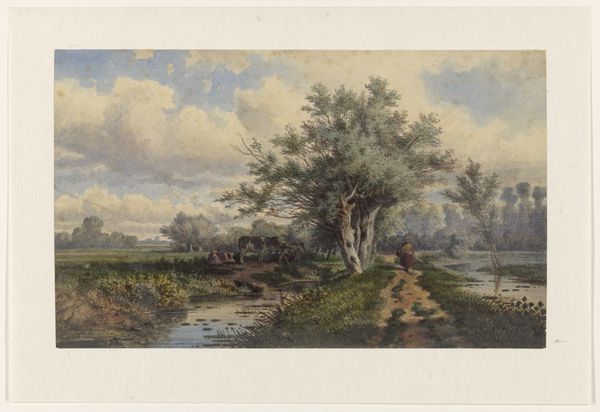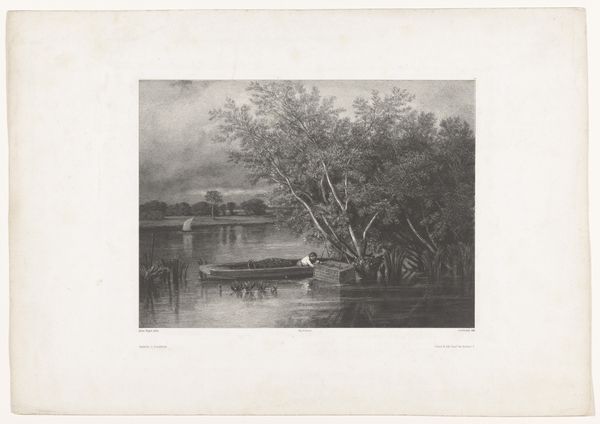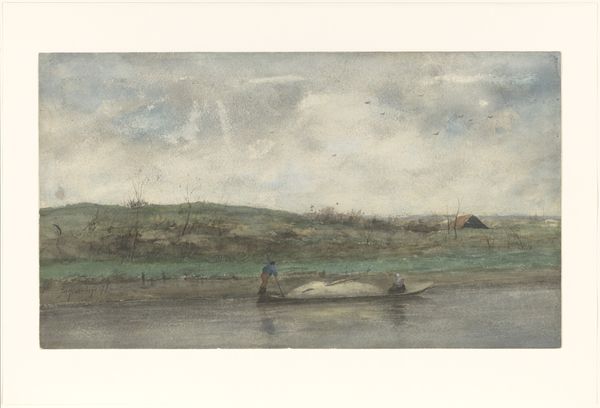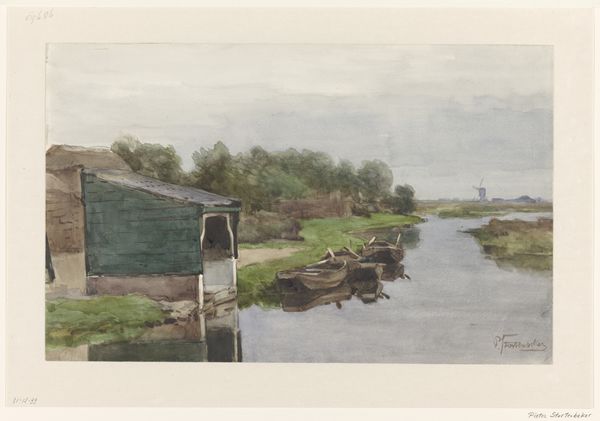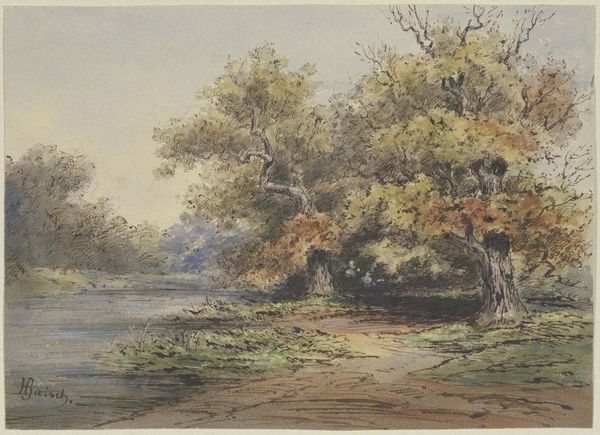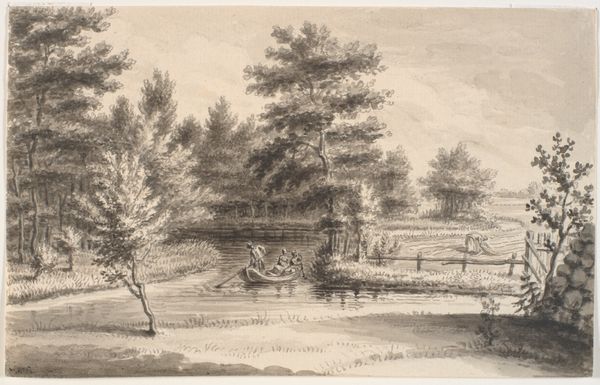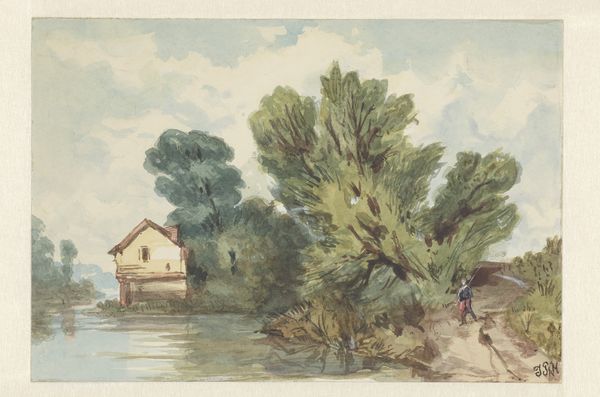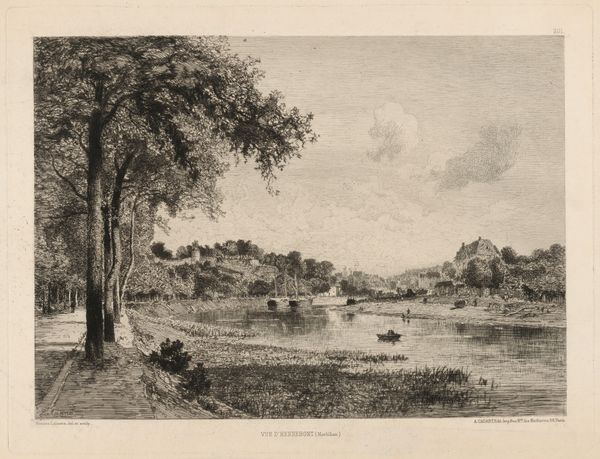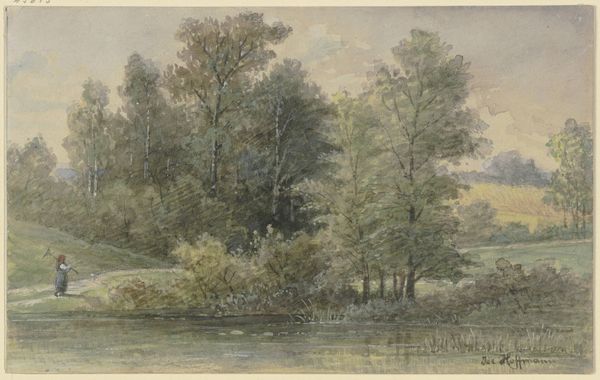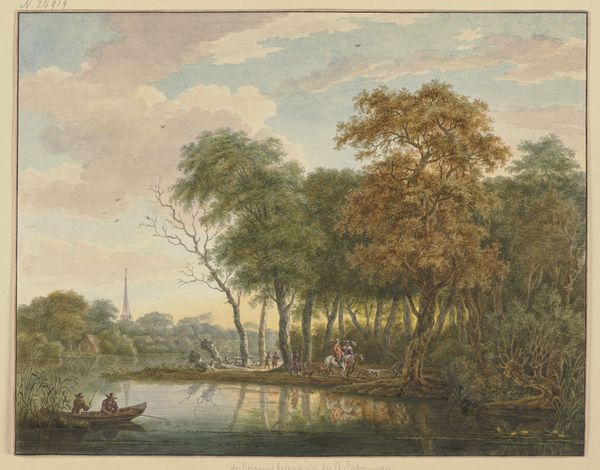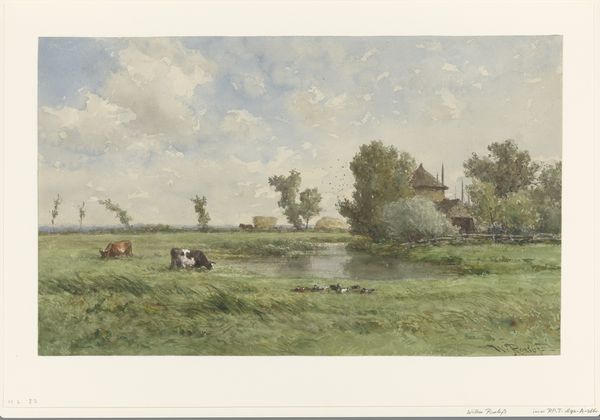
painting, watercolor
#
dutch-golden-age
#
painting
#
impressionism
#
landscape
#
watercolor
#
realism
Dimensions: height 298 mm, width 507 mm
Copyright: Rijks Museum: Open Domain
Editor: This watercolor piece, "Landscape with Water and Ducks," by Willem Roelofs, painted sometime between 1832 and 1892, has a wonderfully serene feel. I’m struck by how Roelofs captures the stillness of the water and the subtle light. What’s your take on it? Curator: I see it as part of a broader shift in 19th-century Dutch art toward realism and a renewed interest in the local landscape. Unlike earlier Romantic landscapes, which were often idealized, artists like Roelofs focused on accurately depicting the Dutch countryside. He was part of a generation, along with the Hague School painters, who sought to capture the everyday beauty of the Netherlands. Look how different this is from Golden Age landscapes. What accounts for that difference in focus, do you think? Editor: I suppose people at the time were interested in depictions of the actual environment surrounding them. Curator: Precisely! There was a rising middle class who wanted art that reflected their own experiences and surroundings, and public institutions like the Rijksmuseum helped to foster this new focus. It also mirrors the political and economic stability in the Netherlands at the time. These weren't dramatic history paintings aimed at royalty. It was for a broader viewing public with a rising sense of nationalism. Editor: That's interesting. It’s like this painting is not just a landscape, but also a social document. Curator: Exactly! Think about where these landscapes were displayed, who was viewing them, and what values they reinforced. Roelofs and his contemporaries helped define what it meant to be Dutch, visually, at a specific historical moment. The ducks here suggest the public ownership of land, available to everyone, at a time where that might not be strictly true. Editor: I never considered that! It makes me see it completely differently, thank you. Curator: My pleasure! It's through understanding these historical contexts that we can fully appreciate the power and meaning embedded in these seemingly simple scenes.
Comments
No comments
Be the first to comment and join the conversation on the ultimate creative platform.
